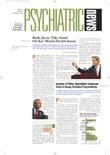The report of the President's New Freedom Commission on Mental Health, released a year ago, recommended a complete overhaul of the nation's mental health care system. That development triggered a renewed interest in many quarters, including psychiatry, as to how the mental health system in particular, and the health care system in general, could be better organized to meet the needs of the people they serve.
Many features of the current health care system stand out as targets for change. The system is exclusive, discriminatory, expensive, and inefficient. It relies upon either private or government-sponsored health insurance, yet an ever-growing number of Americans, now approximately 45 million, are uninsured. Many millions more have insurance that fails to provide adequate benefits; this is particularly true with mental health care.
After individually considering these deficiencies and prospective avenues for change, we have pooled our ideas and proposed a new paradigm for the health care system. Called “The Combined, Comprehensive Health Care Model” (CCHCM), our model is a template for a patient-owned and patient-directed health care system that has as its primary objective the achievement and maintenance of quality care, with a secondary focus on cost containment and inclusion of all in need of health care.
The CCHCM consists of three not-forprofit corporate entities that work together in an interactive manner: Triage Depository Organization (TDO), Physician Negotiation Organization (PNO), and Physicians Education Research Certification Organization (PERCO).
The TDO is the fiscal agent for this plan. It would collect funds from individual insured members of the plans, government entities, and employers. It would hold and invest health reimbursement arrangements (HRA) funds—that is, medical savings accounts (MSA)—and pay claims.
The decision about which health care services would be provided and paid for would be made by the TDO board of directors, which would be elected by the plan members. In addition, the TDO would collect utilization-review data, which it would share with the PERCO. On behalf of its members, the TDO would negotiate with the PNO, other practitioners, and pharmaceutical and medical supply vendors to establish a fair price for services.
Ethical issues, especially those concerning whether a particular service is the responsibility of the individual or the community, would be handled by a special committee, also elected by members, but independent of the board of directors.
The PNO would be composed of physician members and staff who would negotiate reimbursement formulas with the TDO through “Black Box,”“ Messenger,” and other techniques to conform to antitrust rules and regulations.
The PERCO would consist of staff and physicians and be open to all physicians for a fee. Its major functions would be continuing postgraduate physicians' education; formulation of best practices; collection of outcome data for utilization-review purposes to maintain/improve quality of care; and annual recertification of physician members, again for the purpose of ensuring quality of care. Such recertification would be voluntary and based on criteria from the AMA and medical specialty organizations.
The proposed model addresses the problems of the current health care system by offering open and nondiscriminatory enrollment; giving control of and responsibility for the use of resources (benefits) to the insured; and increasing physicians' involvement in a system of care that aims at achieving quality and cost containment through ongoing, postgraduate physician education and voluntary adherence to identified best practices and algorithms. Financial incentives for physicians would be based on clinical competence, quality of care provided, and patients' satisfaction through the voluntary certification program described above.
The full description of the model elaborates further on the impact that the physician can have on efficiency, effectiveness, and cost containment. The model also encourages insureds to conserve medical resources through the judicious use of the benefits covered in their medical savings accounts and provides an incentive with the assurance that the invested and unused resources would be returned to them or their progeny.
A full description of the model can be accessed online at<www.psych.org/edu/other_res/lib_archives/archives/200403.pdf> by scrolling to page 17 in Appendix F. ▪
